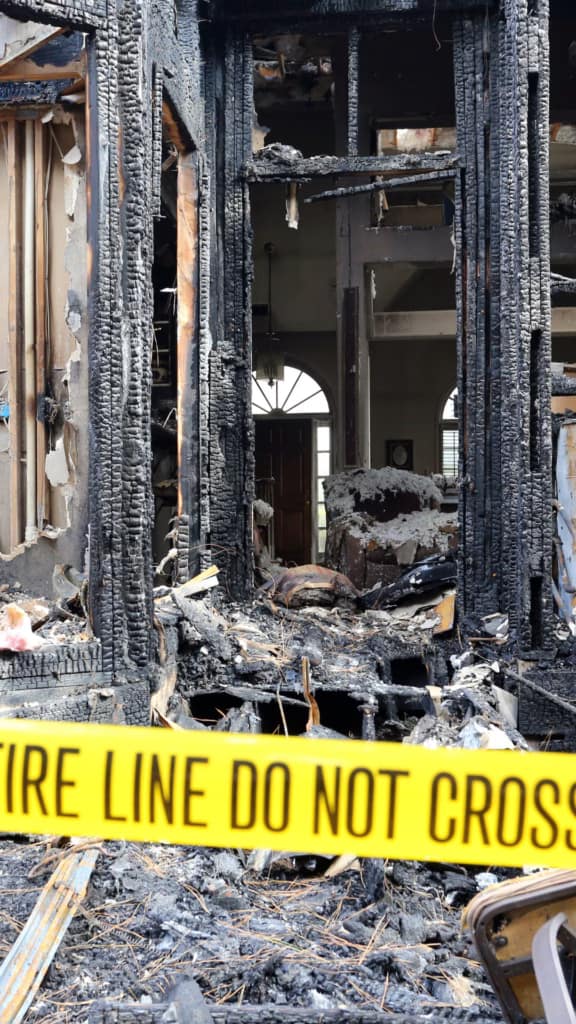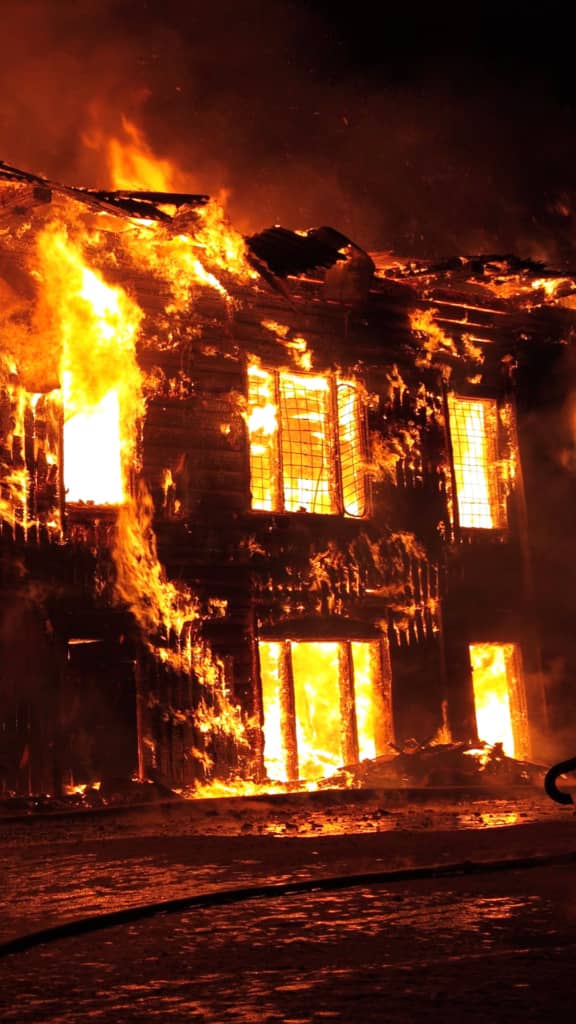Last Updated on June 9, 2025 by Tanya Janse van Rensburg
Disasters never show up when you're ready. One minute, everything feels normal, and the next, you're dealing with a flooded basement, smoke-damaged walls, or a roof torn off by a storm.
It all happens fast—and it throws your world off balance.
Once things settle and it’s safe to step back inside, the cleanup can feel just as overwhelming.
But you don’t have to take it all on at once. One task at a time is enough.
In this guide, you’ll find the steps to help you get back on track.

Before you start picking things up or trying to clean, stop and make sure it’s safe to be there.
It’s easy to assume everything’s fine once the storm or fire is over, but some damage isn’t obvious right away, and rushing in can put you in danger.
Take a moment to look around.
If doors won’t open or close like they used to, that’s another sign something’s off.
If anything seems unstable, don’t take chances. Step back and wait for someone with experience to inspect it. It’s not worth risking your safety just to get started sooner.
Disasters can throw off gas lines, wiring, and plumbing. Don't do anything before you shut off the main switches for gas, water, and electricity, especially if there is flooding or fire.
It helps prevent fires, shocks, and more damage. If you’re not sure how to do it safely, call your utility company or an emergency tech for help.
Even if your home looks safe, the air and surfaces might not be. Mold, soot, sharp debris, and chemical residues can all be harmful.
Put on thick gloves, sturdy boots, and an N95 mask or respirator. Long sleeves and safety goggles are smart, too. It might feel like overkill, but it only takes one cut or inhaled particle to set you back.
Many people overlook this step in the rush to clean up, but it’s one of the most important things you can do. Don’t move or throw anything away; document the damage first.
Start with photos and videos. Walk through each room and capture wide shots as well as close-ups. Don’t just focus on the obvious damage—take pictures of everything, even minor things.
This will help support your insurance claim and give contractors a clear view of what needs to be repaired.
Along with photos, make a written list of everything that’s been damaged. Include as much detail as you can, like item names, brands, model numbers, and even approximate values.
If you have receipts or warranties, keep them on your list. It might feel tedious, but this record will make the recovery process a lot smoother later on.


You don’t need to wait until your home is spotless to get the ball rolling.
The sooner you reach out to your insurance company, the better.
Take a few minutes to look over your insurance policy.
Check what kinds of damage are covered, what your deductible is, and if there are any specific steps you’re supposed to follow when filing a claim.
When you're ready to call your insurer, keep things straightforward. Stick to the facts and have your documentation nearby.
Here’s what to talk about:
Next, it's time to clear things out. Focus on removing items that are clearly beyond repair—soaked furniture, charred materials, crumbling drywall. Getting rid of the worst of it will help you see what you're really dealing with.
As you go through your space, separate trash from anything that might still be useful. Don’t assume everything is a total loss. Some items can be cleaned or repaired, like those that weren’t directly exposed to water or fire.
Also, check your city or county’s waste guidelines before hauling things to the curb.
Disaster waste often has special rules, mainly for things like appliances, hazardous materials, or construction debris.
If your home was affected by flooding, time isn't on your side. More than just damaging materials, moisture creates the perfect environment for mold and bacteria to grow.
Use fans and dehumidifiers to move air around and pull moisture out of walls, floors, and furniture. Even after visible water is gone, damp air can still cause long-term issues.
If it’s safe and the weather permits, open windows and doors to let fresh air in. It’s a simple step, but it makes a big difference in clearing out humidity and helping your home dry out faster.

Something might look clean, but that doesn’t mean it’s safe. After a disaster, bacteria, mold spores, and smoke residue can settle into walls, floors, and everyday items.
A deep clean helps protect your health and prepares your home for repair work.
Stick with reliable cleaning solutions. Use bleach to treat mold and mildew on hard surfaces and vinegar or baking soda for general disinfecting.
Still, don’t mix chemicals, especially anything with ammonia and bleach, since that can create toxic fumes.
Make sure you’re cleaning the spots that are easy to miss. Check behind appliances, inside cabinets, and under flooring if it’s been lifted or waterlogged.
These hidden areas are often where mold and bacteria settle in first.


When the area is clean and dry, it’s time to put your home back together. This stage can take a while, but starting with the right repairs affects how smoothly things go.
Begin with structural repairs. Fix the roof, walls, foundation, and support beams—the core elements keeping your home safe. If you skip or delay these, you can face more serious problems later.
If you're dealing with fire damage restoration, this step is even more important since heat and smoke can weaken structural components that might not look damaged at first glance.
After the structure is sound, move on to materials like insulation, flooring, and drywall. These tend to hold onto moisture and can be a breeding ground for mold if they weren’t removed earlier.
In most cases, it’s safer to replace them than try to salvage anything that was soaked.

Recovering from a disaster is tough—physically, mentally, and emotionally.
You're not just cleaning up a mess; you're picking up the pieces of your life. It’s normal to feel overwhelmed in the beginning, but you don’t have to fix everything in a day.
Start small. Handle what you can, step by step. Some things will take longer than you'd like, and that's okay.
There’s no perfect timeline for getting your home (and your peace of mind) back.